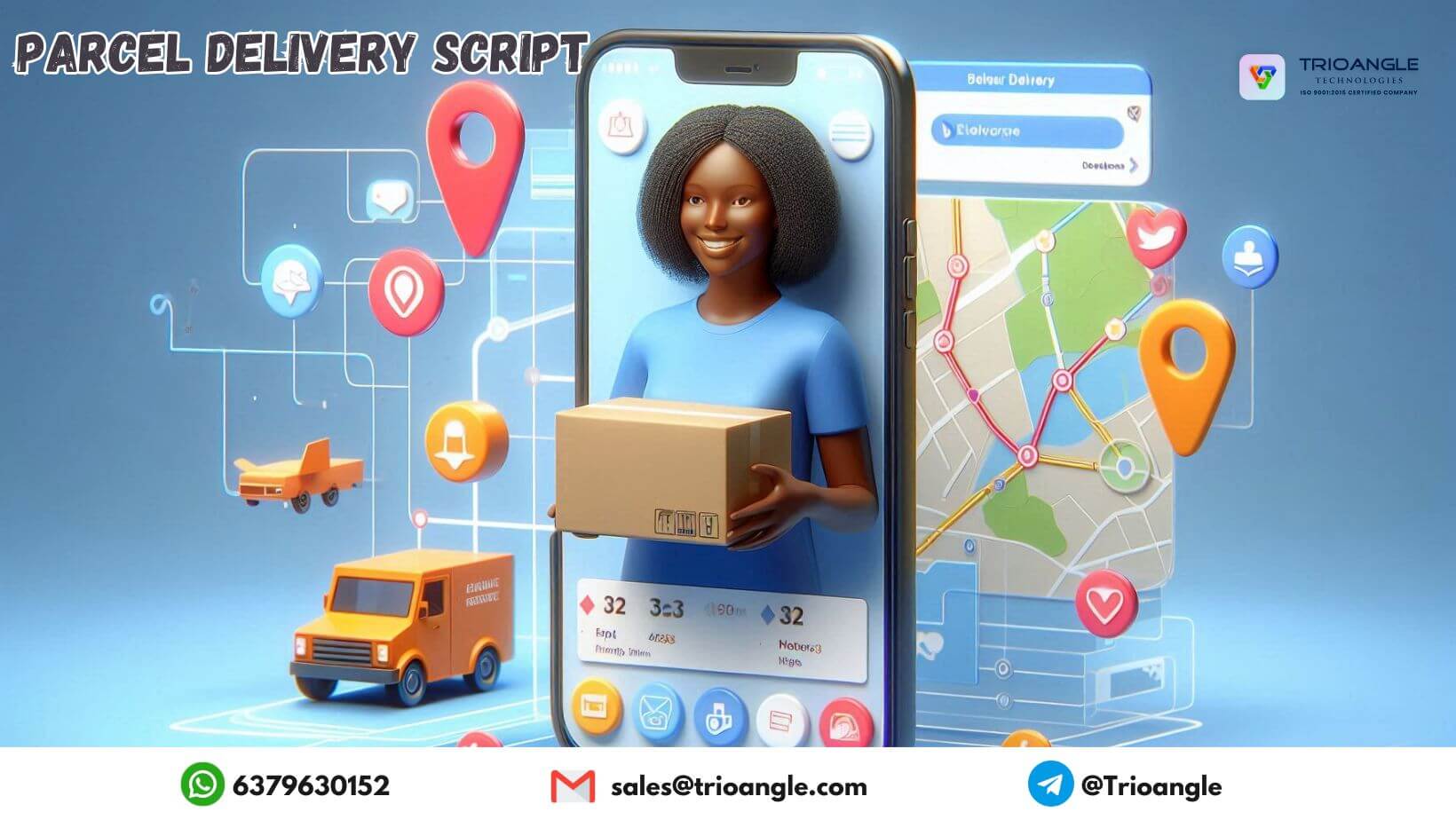Unifying Brand Experience Across Channels with Frontend Web Development Best Practices
Frontend Web Development Best Practices

“Your brand is what other people say about you when you’re not in the room.”
If you’ve ever visited a brand’s website on your phone, checked their app, and then walked into their store, you probably expect things to feel familiar.
The colors, the tone, the way you move around—when it all lines up, you trust the brand more. When it doesn’t, it’s jarring. That’s what we mean by a unified brand experience across channels.
In 2025, the need for this consistency is at an all-time high.
More than ever, users bounce between devices and channels before making a decision. Brands that keep their look, feel, and messaging steady across digital and physical spaces see better engagement, higher trust, and more loyal customers.
I’ve seen firsthand how a unified experience can make or break a brand’s reputation. If your website looks one way, your app another, and your emails yet another, people notice. They might not say it out loud, but it chips away at trust.
So, how do you make sure your brand feels the same everywhere? The answer lies in smart, thoughtful frontend web development. Let’s break it down together.
What Does “Unified Brand Experience” Mean?
A unified brand experience means your brand looks, feels, and sounds the same wherever someone interacts with it—on your website, in your app, at your physical store, or even on social media. It’s not just about using the same logo or color. It’s about making every touchpoint feel like it belongs to the same family.
Why is this so important?
- Trust: People trust what feels familiar.
- Recognition: Consistency helps people remember you.
- Ease of use: When navigation and interactions feel the same, people don’t have to relearn things.
The Role of Frontend Web Development in Brand Consistency
It covers everything from the layout and colors to the way buttons behave. When done right, frontend development becomes the glue that holds your brand together across digital channels.
Here’s what matters most:
- Visuals: Colors, fonts, images, and icons.
- Interactions: How things move, load, and respond to clicks or taps.
- Accessibility: Making sure everyone can use your site, including people with disabilities.
Why Consistency Is Harder Than It Looks
I’ve worked with brands that have amazing in-store experiences but struggle online. Or they nail their website but their app feels like it was made by someone else. Here’s why keeping everything unified is tricky:
- Multiple Platforms: Websites, mobile apps, tablets, wearables, and even smart TVs.
- Different Teams: Sometimes, separate teams handle different channels and don’t always communicate.
- Changing Technology: New devices and browsers pop up all the time.
- User Expectations: People expect things to “just work” everywhere.
Building a Strong Foundation:
Start with a Brand Style Guide.
A style guide is your brand’s playbook. It covers everything from logo usage to colors, fonts, and even the tone of voice. This guide should be the source of truth for everyone—designers, developers, marketers, and even customer support.
What should your style guide include?
- Logo rules: Main logo, alternate versions, spacing, and minimum sizes.
- Color palette: Exact color codes (HEX, RGB, or HSL) for primary, secondary, and accent colors.
- Typography: Which fonts to use, sizes, weights, and how to use them.
- Imagery: Photo styles, icon sets, and illustration guidelines.
- Voice and tone: How your brand “talks” in different situations.
“A unified brand starts with a clearly documented Brand Style Guide that extends beyond logos and colors to include typography, iconography, and messaging.”
Tip: Make your style guide easy to find and update. A shared online document or design system works best.
Responsive and Adaptive Design: One Brand, Every Device
People use all sorts of devices to interact with brands. Your website may look good on a desktop but fall apart on a mobile. Responsive and adaptive design solves this.
Responsive Design:
This means your site layout adjusts smoothly to different screen sizes.It uses adaptable layouts, pictures, and CSS that change based on screen size.
Adaptive Design:
Here, your site detects the device and serves up a tailored layout. It’s more work but can offer a better experience on specific devices.
Why does this matter?
- Consistency: Your brand looks and feels the same everywhere.
- Usability: People can easily use your site, no matter the device.
- Accessibility: Everyone, including those with disabilities, gets a good experience.
“A centralized Design System is vital for enforcing brand consistency through reusable components, pattern libraries, and UI guidelines across platforms.”
Key Frontend Best Practices for a Unified Brand Experience
Let’s get practical. Here are the best practices I recommend for keeping your brand experience steady across channels.
1. Use a Centralized Design System
A design system is a set of parts, models, and rules that can be used again and again.
It’s like a toolbox for building consistent interfaces.
Why use one?
- Faster development: Teams can reuse components instead of rebuilding them.
- Fewer mistakes: Everyone uses the same building blocks.
- Easier updates: Change a button style in one place, and it updates everywhere.
What should be in your design system?
- Buttons, forms, navigation bars, cards, and other UI elements.
- Color and typography rules.
- Accessibility guidelines.
2. Stick to Your Brand Colors and Typography
Brand image relies heavily on colors and fonts. Seemingly minor alterations can negatively impact perception.
- Use exact color codes—Don’t just look at it.
- Stick to approved fonts for headings and body text.
- Keep font sizes, weights, and spacing consistent.
3. Make Accessibility a Priority
Accessibility means everyone can use your site, including people with disabilities. It’s not just the right thing to do—it’s good for your brand.
- Use high-contrast colors for text and backgrounds.
- Make sure your site works with screen readers.
- Ensure all interactive elements can be used with a keyboard.
“Accessibility ensures that your brand message and experience reach users with disabilities, making inclusivity a driver of brand legitimacy.”
4. Optimize for Performance
A slow site hurts your brand. People expect pages to load fast, no matter the device.
- Minimize and bundle your CSS and JavaScript files.
- Use image optimization tools.
- Load only what’s needed for each page (lazy loading).
- Use a Content Delivery Network (CDN) for global speed.
5. Test Across Browsers and Devices
Not all browsers show your site the same way. Test early and often.
- Try your site on Chrome, Firefox, Safari, and Edge.
- Check on iOS and Android devices.
- Use tools like BrowserStack for more coverage.
“Test early and often: Run tests on different browsers and devices right from the start — and keep doing it throughout the development process.”
6. Keep Your Code Clean and Modular
Clean code is easier to update and less likely to break. Modular code means you can reuse parts without copying and pasting.
- Use clear naming for classes and components.
- Comment your code so others know what’s going on.
- Break big files into smaller, focused modules.
Common Pitfalls (and How to Avoid Them)
Even with the best intentions, brands can slip up. Here are some common problems I’ve seen—and how to fix them.
- Mixing old and new styles: Update all channels when you refresh your brand, not just one.
- Ignoring accessibility: Don’t treat it as an afterthought. Build it in from the start.
- Letting teams work in silos: Make sure everyone shares the same style guide and design system.
- Skipping user testing: What looks good to you might confuse your users. Test with real people.
Future Trends: What’s Next for Unified Brand Experiences?
The world of frontend development keeps moving. Here are a few trends I’m watching:
- Design tokens: These are shared variables for colors, fonts, and spacing used across platforms, making updates easier.
- Component-driven development: Building with reusable blocks speeds up work and keeps things consistent.
- AI-powered personalization: Brands are starting to tailor experiences to each user while keeping the core brand steady.
- Voice and gesture interfaces: As new ways to interact emerge, keeping your brand steady across them will matter even more.
Final Thoughts
Keeping your brand experience unified across channels isn’t just about looking good. It’s about building trust, making things easier for your users, and helping your team work smarter. The best brands don’t leave this to chance—they build it into every pixel, word, and interaction.
If you’re just starting, focus on the basics: a solid style guide, a shared design system, and a commitment to accessibility and performance. Test your work, listen to feedback, and keep refining.
If you’re running a business and don’t have a dedicated in-house team, front end development services can help you build and maintain a unified brand experience.
And remember—consistency doesn’t mean boring. It means your brand is always recognizable, always reliable, and always ready to meet your customers wherever they are.







